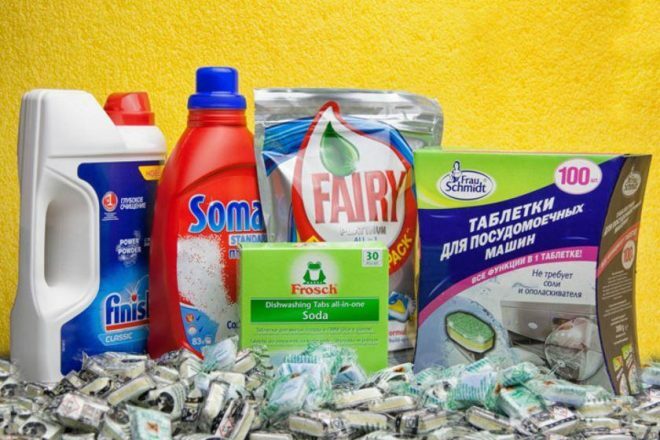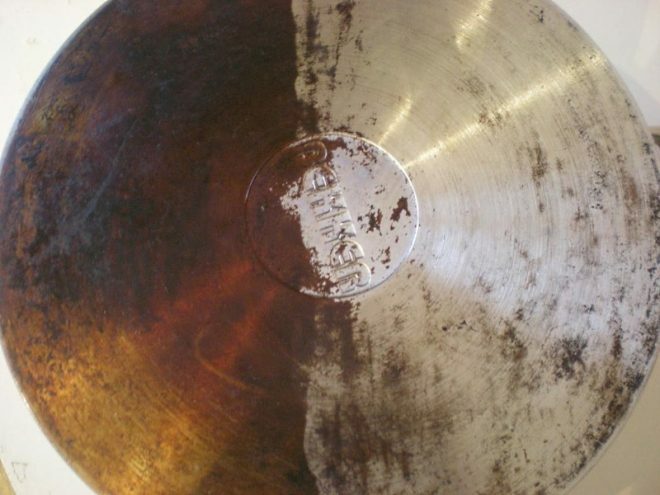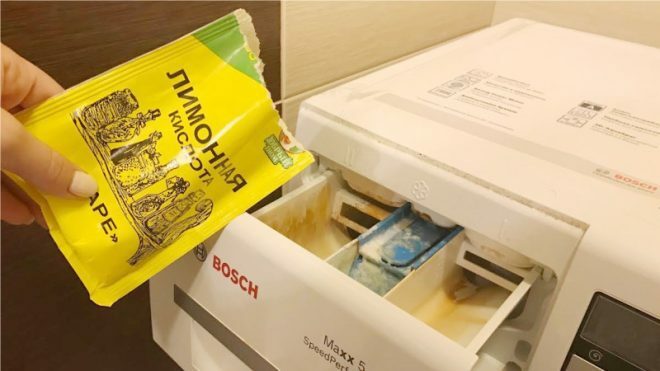 Sooner or later, in the process of using the iron( to its ironing surface) any dirt, dust and cloth particles stick, resulting in carbon deposits, which dramatically worsens slip and makes impossible the normal use of ironing equipment. So the question arises, what and how to clean the iron with a Teflon coating, ceramic or metal from soot. In household chemicals stores there is a huge selection of various cleaning products for such cases. But we will talk about improvised, home remedies and methods of cleaning the soles from the burn. We will tell about how to clean the iron at home with penny means, while quickly and efficiently.
Sooner or later, in the process of using the iron( to its ironing surface) any dirt, dust and cloth particles stick, resulting in carbon deposits, which dramatically worsens slip and makes impossible the normal use of ironing equipment. So the question arises, what and how to clean the iron with a Teflon coating, ceramic or metal from soot. In household chemicals stores there is a huge selection of various cleaning products for such cases. But we will talk about improvised, home remedies and methods of cleaning the soles from the burn. We will tell about how to clean the iron at home with penny means, while quickly and efficiently.
- Cleaning the iron from carbon at home
- Traditional methods of cleaning the iron
- Tips for proper maintenance
Cleaning the iron from carbon in the household at home
The first purchase of an iron cleaning tool that you can buy at any hardware store to purchase an iron in a shop to stay in an iron in a condition
to purchase an iron to buy an iron from a deposit in a home condition
outwardly resembling an ordinary stearin candle. It costs mere pennies, so you can pre-buy a few of these pencils in reserve and not wrestle when the need arises.
This pencil is easy to use. But still give detailed instructions on how to clean the iron from carbon in the home with a pencil.
- We warm the sole to 140 degrees( this is the mode of ironing woolen fabrics).
- Firmly take the pencil from the opposite end.
- Take a hot iron in your hands so that the sole is turned in the opposite direction from you.
- We rub the dirty places on the sole with a pencil, while all the scum should turn into a dirty molten liquid, which must be removed with an unnecessary rag laid out on the table. This rag will have to be thrown away.
- We work carefully not to get burned, and not to inhale the smoke that will come as a result of the chemical reaction of the ingredients of the pencil with red-hot carbon. Manufacturers claim that this smoke does not contain any toxic substances and is absolutely safe, but you still should not tempt fate.
- To clean the holes for steam, in which carbon deposits accumulated, it is necessary during steam generation to simply hold the pencil to the holes. You'd be surprised, but the dirt from the steam holes will be removed, as if by magic. With a pencil to clean the iron at home from soot can be even in inaccessible places, and it is not difficult.
- After cleaning the sole, and it only takes a few minutes, the iron should be turned off and rinsed off chemical residues in a cooled state.
In the end, you can see how effective the pencil is. The ironing surface will again become a mirror and ideally smooth, easily sliding on any fabric. An important nuance - the composition of the pencil does not include abrasive particles, so you can clean the ironing surface, even if it has a thin coating.
![]() See also - How to remove the iron mark on clothes
See also - How to remove the iron mark on clothes

The second simple but effective way is to clean the iron with vinegar. They can wash off soot, burnt cloth, limescale( scale) and other soils on the sole. To clean the vinegar, we will need more cotton pads and sticks, which can be purchased at any store that sells cosmetics and hygiene products. So, a brief instruction on how to remove carbon with food vinegar.
- Iron should be slightly warmed, as for ironing delicate fabrics.
- Wet the cotton pad with vinegar, but not so much that the vinegar drained.
- For greater security, you can work with cotton buds, or take a disc with tweezers. Use a damp disc to clean the entire contaminated surface. From the first treatment, the burner may not be removed, then the procedure must be repeated to finally remove the plaque. Processing should be carried out in a circular motion.
- Especially carefully you need to clean the burner with vinegar in the holes for steam. This is done with cotton swabs and so that the vinegar in no way leaks into the holes, for which the iron is better to keep the canopy, sole down.
- Every time after treatment with vinegar, you need to iron a cotton rag, on which should be dissolved scorch. In this way, you can clean the soles with a Teflon, ceramic and metal coating, but this should be done carefully, as the coating sometimes breaks down due to an excess of vinegar.

If the soot is very powerful, you can use ammonia instead of vinegar. They wipe the cold surface, and then turn on the heat. After warming up, iron the cotton fabric, while pressing hard.
Many people ask how to clean the iron from adhering polyethylene, and what types of home remedies can cope with this type of burn. This is really a difficult case, and in such cases, to dissolve and wash the soot will need a nail polish remover or acetone.
![]() See also - Than to clean the iron from scale inside
See also - Than to clean the iron from scale inside
Traditional methods of cleaning the ironcleaning up. We list the most common ways - Candle. Many say that carbon deposits can be easily removed using a paraffin candle and the effect is almost the same as from a pencil. The technique and algorithm of actions is exactly the same as with a pencil, only it is desirable to wrap a candle with a rag so as not to burn yourself.
- Cooking salt. With its help you can remove even the most persistent pollution. The thicker the deposit, the larger the salt to be used. It is evenly poured on a layer of cloth or paper and ironed with good pressure by a strongly heated white sole. This is done until the surface is completely clean.
- Kitchen Soda. Effectively remove carbon deposits can be using kitchen soda. To do this, a small amount of salt is dissolved in water. Moisten with a cotton swab with a soda solution and treat with a cold sole. As a result, the soot softens and should be easily removed with a regular cloth.
- Laundry soap. Effectively removes fresh stains that have just appeared. You need to rub these stains on a cold sole with soap and wipe with a cloth.
Tips for the correct operation of the
- Each time after the iron cools, it should be wiped with a damp cloth. If molten synthetic fabric is stuck to it, then it should be removed with acetone or nail polish remover after cooling.
- We do not recommend cleaning ironing surfaces with emery paper, abrasive substances or cleaning with iron wool. Such a rough impact will definitely leave scratches on the ironing surface.
- Cotton fabrics and linen fabrics need to be ironed from the front side, this has a positive effect on the quality of the fabric.
- Silk fabrics should be ironed, not dried, slightly wet or include a steamer.
- Ironing velor and velvet is forbidden on the ironing board.
- The cleanest water should be poured into the steamer, ideally distilled.
In this article, we told how and how to clean the iron from carbon and burnt fabric using chemical means and effective ways of housewives. The most important thing is to clarify once and for all that it is absolutely impossible to use coarse abrasives for cleaning the teflon sole of the iron, as this leads to deterioration of the smooth surface and the appearance of even greater problems later.


